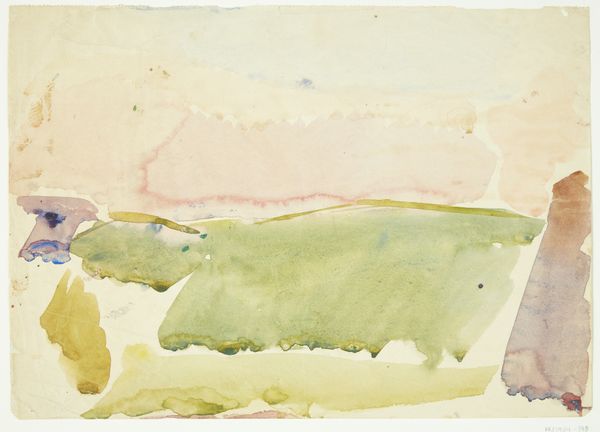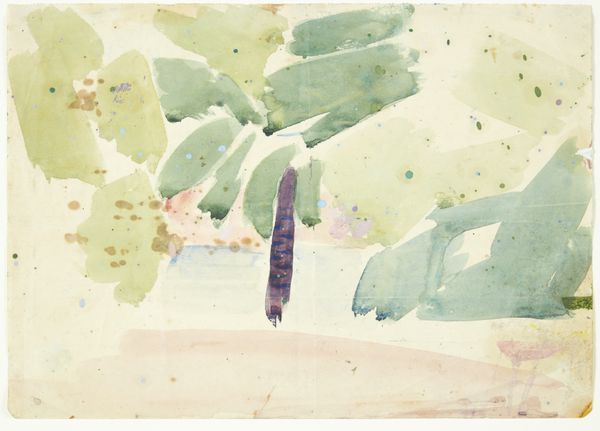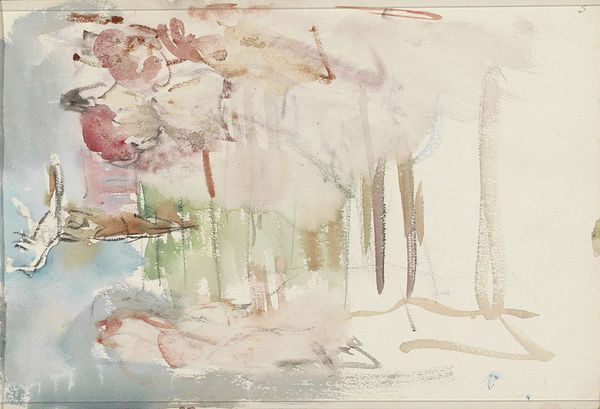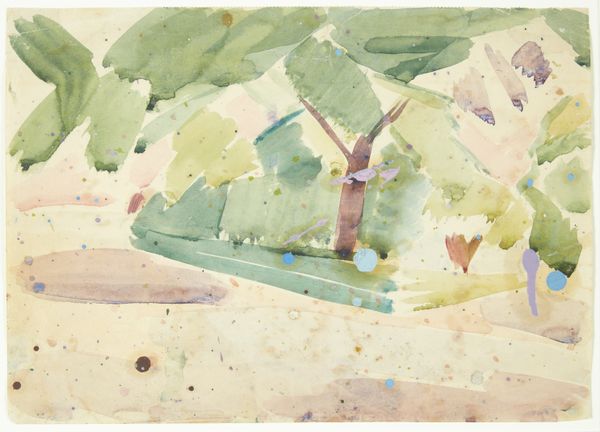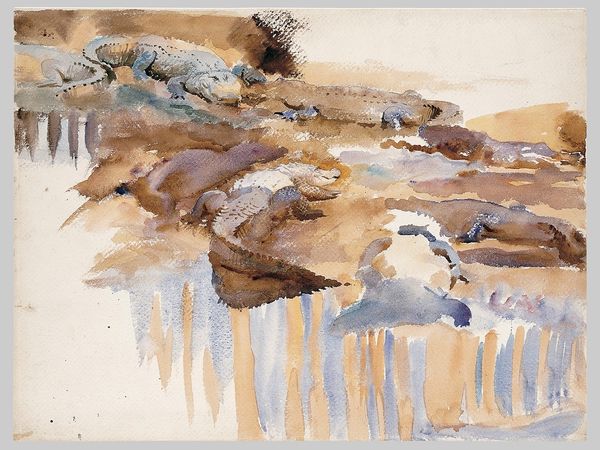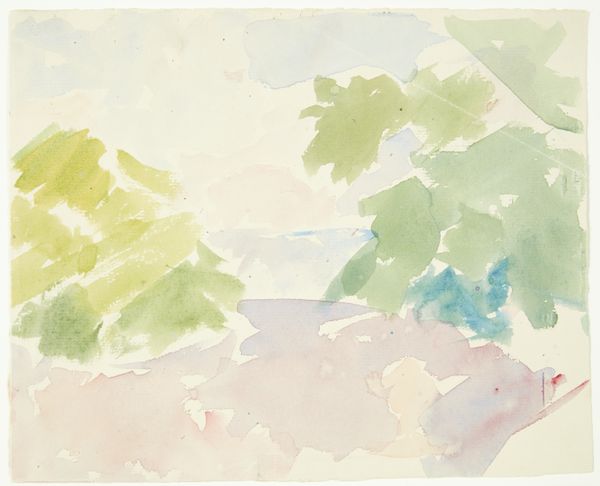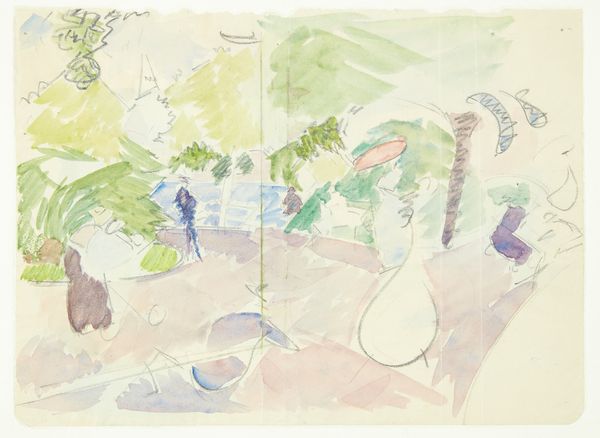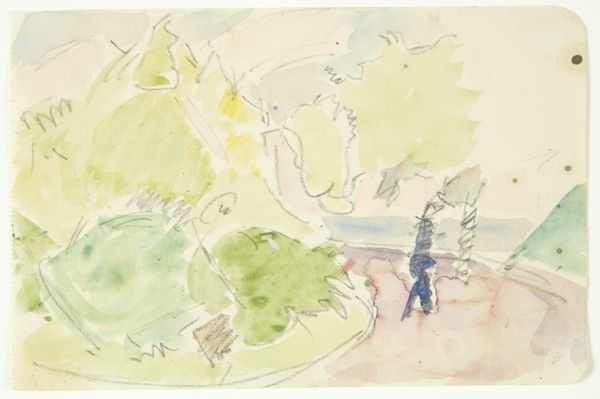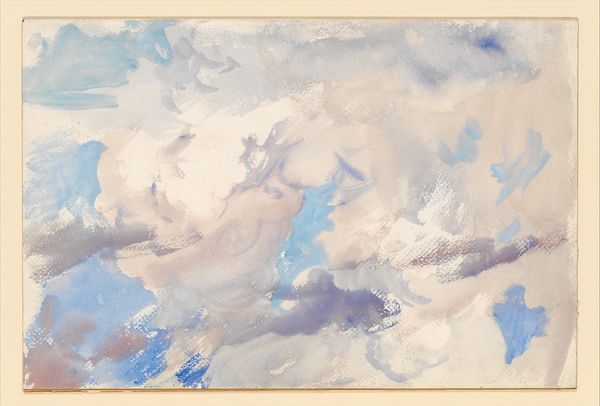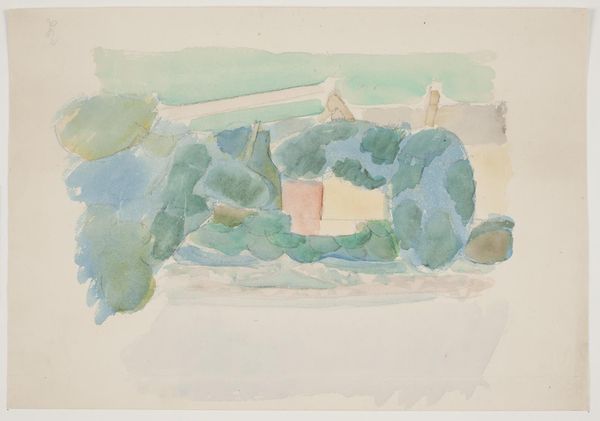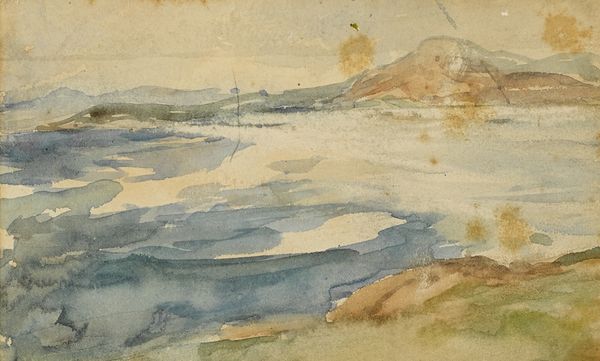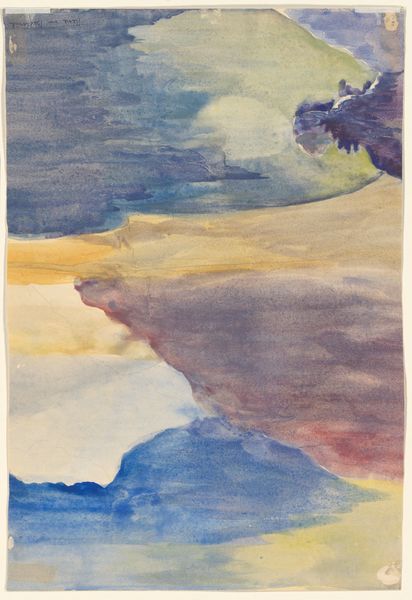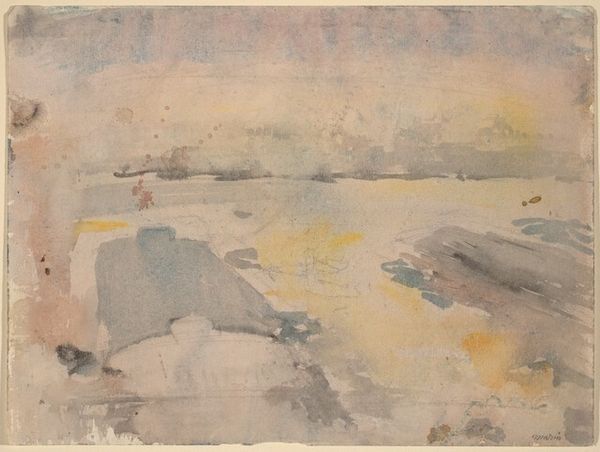
drawing, watercolor
#
gouache
#
drawing
#
landscape
#
watercolor
#
abstraction
Dimensions: 203 mm (height) x 287 mm (width) (bladmaal)
Curator: Here we have Edvard Weie's "Farvestudie til Langelinie-billedet," a color study dating from around 1923 to 1927. It's currently held at the SMK, the National Gallery of Denmark. Editor: It's ethereal, isn't it? These watery, translucent washes… They almost dissolve into the paper. Very dreamlike. What materials did he use? Curator: It appears Weie employed watercolor and gouache for this drawing. Notice how he builds up the forms, block by block, with translucent layers, as though trying to conjure something solid out of the very act of perception. It’s quite abstract. Editor: Absolutely. And the choice of watercolor is key, isn’t it? That flow, the uncontrollable aspect, makes it so expressive. It speaks of fleeting moments, impressions captured before they fade. I imagine the cheap paper must've wrinkled easily, too. It must have dried rather quickly, with its very absorbent characteristics, causing a challenge to manage those flowing textures, no? Curator: You are right. But watercolor isn't merely a tool. Consider Langelinie, a historically important pier in Copenhagen; as a place of arrival and departure, transition becomes a fundamental experience. The fluidity, the blending – isn't it reminiscent of how memory works, too? Fading at the edges, blending with imagination? The harbor itself, where solid land meets liquid possibility. Editor: That blending, to me, it points directly to its construction as a "study." What was his labor? Rapidly setting down notes for later recall? An aide-mémoire for a future composition, maybe focusing on capturing the exact tints and shades of a sunset. The process itself becomes a key to understand Weie's studio practice, Curator: It could well be. Each daub and wash possesses emotional weight; it's like a distillation of the landscape into pure feeling. You find it quite frequently when an artist attempts to evoke certain memories with landscape works of this era, too. Editor: A material record, almost like a transcription. Thank you, my perception has shifted seeing this through that viewpoint! Curator: Of course! Thank you for expanding my view to look more deeply into how a painting functions more tangibly through labor.
Comments
No comments
Be the first to comment and join the conversation on the ultimate creative platform.
